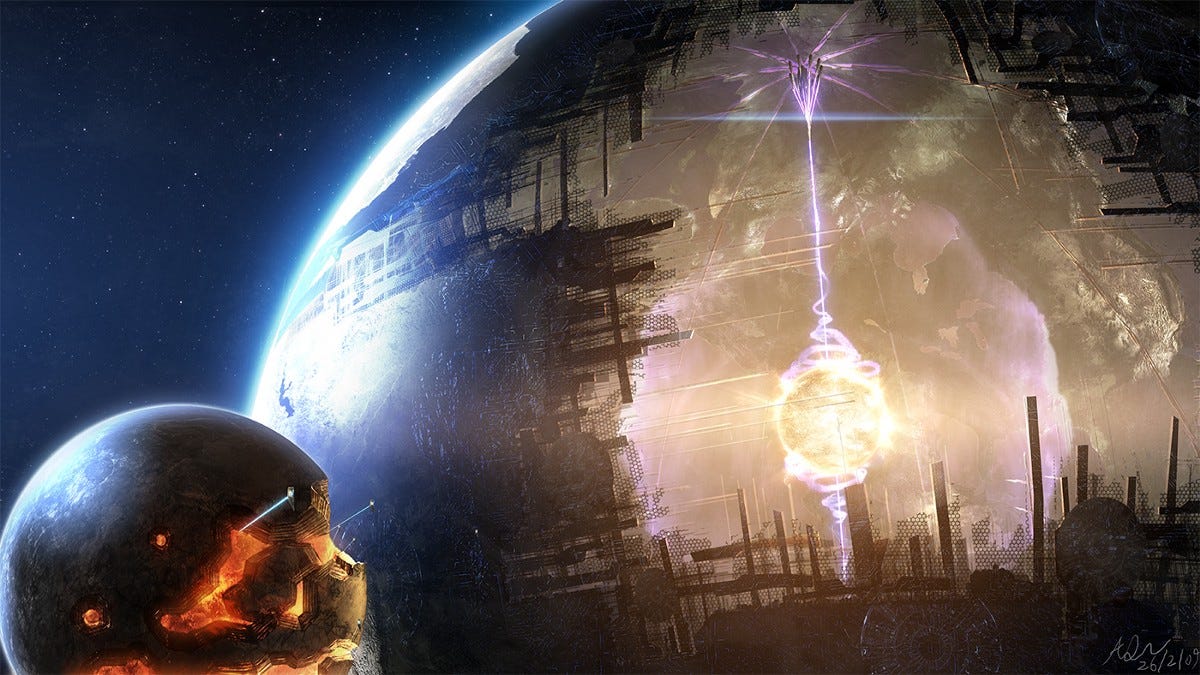Long Take: Uploading a Digital Twin of the financial system into DeFi, with MakerDAO and HVBC
Gm Fintech Architects —
Today we are diving into the following topics:
Summary: Maker has issued a $100MM loan to Huntingdon Bank. But there is much more to this story, and we dig into the details of the structure, the politics of the MakerDAO, the dangers of over-regulation, and the choices to be made in regards to digitization. As the financial world attempts to upload traditional assets into DeFi, real challenges are emerging in human organization, as well as the various associated markets. Can a DAO commit to real world assets when those assets subject it to lethal danger?
Topics: digital twins, governance, digital assets, capital markets, banking and lending, politics
Tags: MakerDAO, Huntingdon Bank, Archax, Securitize, Centrifuge, Unfederal Reserve, Australian Stock Exchange
Thanks for your time and attention. If you have ideas for companies or topics to cover next week, let us know by clicking the button below.
Long Take
Digital Twins
Science fiction has long told us stories of our minds being uploaded into a collective machine consciousness.
The details of the stories are different. Perhaps we call it the Singularity, with artificial intelligence outpacing human computational power and absorbing us therein. Or perhaps we call it the Metaverse, and we render ourself digital in its video game worlds with video game assets. Maybe we merely “surf the Web” or “Facebook each other”. Maybe we reformat the human mind into quantum computers in the shape of paperclips, rotating in a Dyson Sphere around the Sun.
While we wait for tech to catch up to this utopia/dystopia dream, we can still notice when things get “digitized”, or “digitalized”, or APIed, or whatever, into a new software robot conglomerate. We like the word “uploaded”, let’s stick with that. Industrial and physical spaces are continuously in the process of being uploaded into digital versions thereof, creating digital twins of the physical objects.
A fundamental question, in thinking about this, is whether to keep the digital and physical worlds separate. For example, one could focus on progress in digital-only land by building AR/VR hardware, the best rendering engine, the ability to host lots of players synchronously, and other things that make the digital a place that one can actually be. Alternately, one could focus on bringing the digital into physical devices, embodying the software senses with machine vision, making smart cars, smart mirrors, and smart factories.
Keeping the things separate is easier!
Building a financial system that *only* serves the Web3 population is simpler than connecting that system into the “real world”. The real world, composed of very many people, of which many are willfully Luddites, will resist being uploaded. Similarly, the digital purists, dreaming of decentralized self-sovereignty, may not want the centralized orthodox to be among them.
And yet, the merging of the two is inevitable. It is in our nature to live in the forests and garden our trees, and then come back to watch TV on our enormous screens powered by electricity, the Internet, and globalized labor. The dialectic is powerful to create motion, tension, dynamism. But it always ends in synthesis.
MakerDAO uploading Hundington Bank
In this context, we can start to think about financial assets. In particular, let’s focus on the $100MM loan from Maker backed by real world assets (“RWA”). We assume you know the basics. Maker mints DAI, a stablecoin pegged to the USD, in exchange for valuable collateral. That collateral started out as ETH, and then grew to include a number of crypto assets. Some of those assets are highly decentralized, in the sense that regulation is unlikely to nuke them despite best efforts to the contrary.
In including USDC, an American stablecoin issued by Circle and therefore subject to the various machination of the SEC, OCC, and State regulators, Maker introduced a bridge into American sovereign power. It is an increase of “the surface area” of vulnerability to orthodoxy, and a weakness for full decentralization. But it is also imminently practical — to grow and be valuable, which is what DAI wants to be as a money, the protocol needs to eat collateral.


